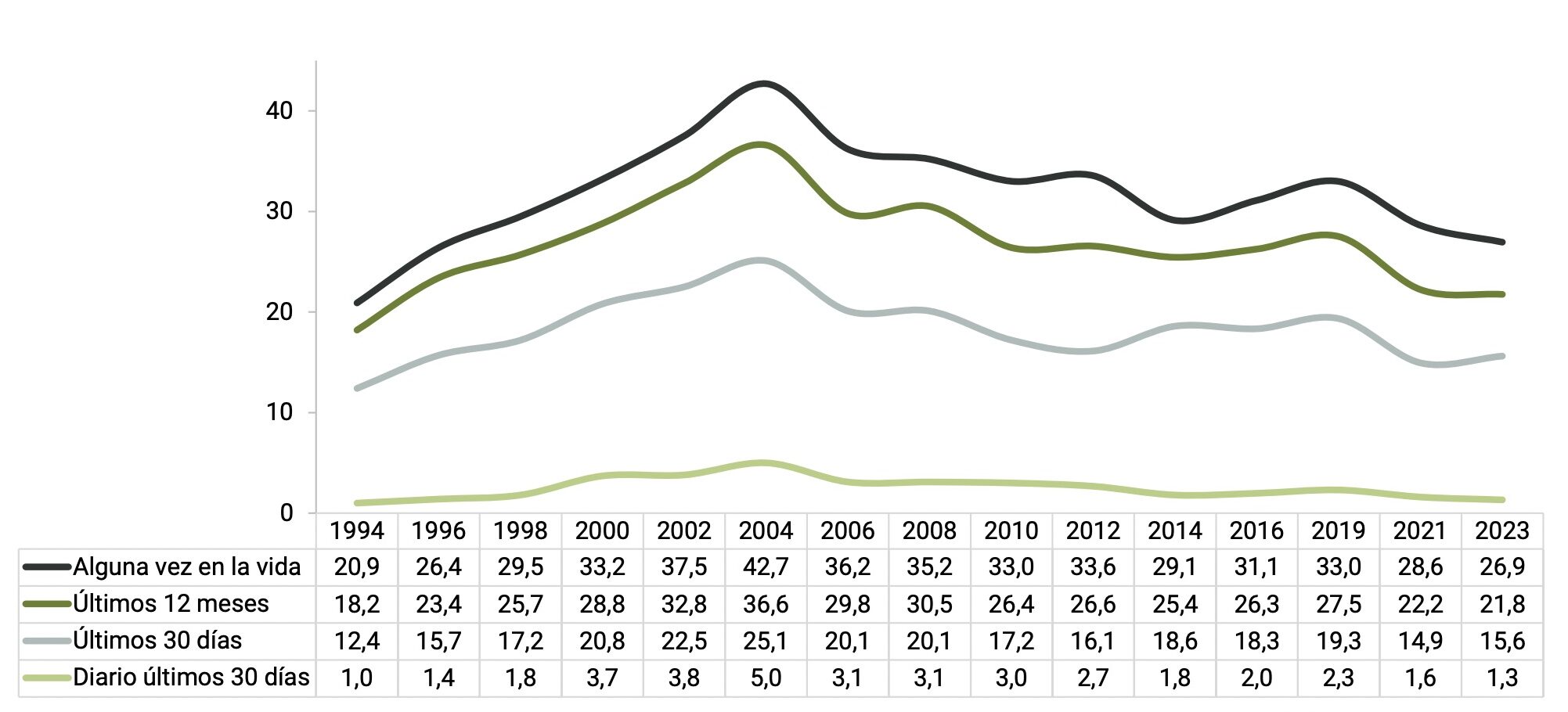The Spanish Ministry of Health has published “2025 Cannabis Monograph: Consumption and Consequences”, an updated analysis examining the evolving patterns of cannabis use across Spain and its social and health-related effects.

Source: OEDA. Survey on Drug Use in Secondary Education in Spain
2025 Cannabis Monograph was developed by the Government Delegation for the National Plan on Drugs of the Spanish Ministry of Health.
One of the report’s most noteworthy findings is the steady decline in cannabis use among adolescents. In 2004, 25% of secondary school students aged 14 to 18 reported consuming cannabis in the past 30 days. By 2023, that figure dropped to 15%, marking a significant 40% relative decrease. This trend may indicate a shift in youth behavior and risk perception — potentially influenced by prevention campaigns, changes in social environments, and greater awareness of cannabis’ adverse effects.
Additionally, sociocultural factors cannot be ruled out, including the emergence of new psychoactive substances and a shift toward products perceived as less harmful, which could be reshaping usage trends in this age group.
This decline contrasts with stable use levels among adults. Among individuals aged 15 to 64, 12% report cannabis use in the past month, a figure that has remained relatively unchanged in recent years. Daily use, while showing a slight increase in recent years, remains low, at around 2,5%.
The report also highlights a notable rise in tetrahydrocannabinol (THC) concentrations — the primary psychoactive compound in cannabis. In 2023, THC levels reached 29% by weight in hashish samples and 12,6% in herbal cannabis, significantly higher than levels recorded in prior decades.
New consumption methods — such as edibles and e-liquids — along with the rapid emergence of synthetic cannabinoids, also raise concerns. The diversity and chemical variability of these new products also complicate regulation.

Spain has formally regulated the medical cannabis use through the approval of Royal Decree 903/2025. The decree defines the conditions under which cannabis-based medicines can be prescribed and distributed within public hospitals.

Most people recognize marijuana for its two major substances: THC, responsible for psychoactivity, and CBD, valued for its therapeutic effects. However, recent research has identified approximately 600 different chemical compounds in cannabis, and scientists are paying more and more attention to some of the less-famous ingredients.

In September 2025, Dr. Dustin Sulak, the founder of Healer.com and well-known American cannabis expert, presented a webinar exploring how cannabis can help with cancer, wound healing, ALS and Alzheimer’s disease.